Lecture
The first ideas about the psyche were associated with animism (lat. Anima - spirit, soul) - the most ancient views, according to which everything that exists in the world has a soul. The soul was understood as an entity independent of the body, controlling all living and non-living objects.
The assumption about the soul, its origin, nature and destination is as old as humanity. However, it is in classical Greek thought from Homer to Plato and atomists that we see the emergence of arguments that have since symbolized debate (mystical / materialistic; gnostic / agnostic; magic / science).
Although the fantastic transformations of the Greek myth of the same era may be more colorful than the philosophy behind them, it seems acceptable here to make a diagram of how specific ideas about the nature of the soul arose and developed.
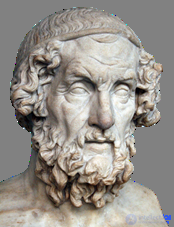 The poet Homer (VIII century BC) saw man as a compound, which is the expression of three different objects - the body ( soma ), psyche and thumos . The latter was a condition associated with a diaphragm or a pectoral obstruction, regarded as the location of will and feeling. The fourth component, eidolon (image), appeared in dreams and, like the Egyptian ka, was considered alive after death. But the ancient Greeks did not honor their dead. Hades, as a punishment for earthly sin (for example, the tortures of Tantalus and Sisyphus), went “hand in hand” with the perception of the dead as unfortunate shadows condemned to “restless aimless throwing back and forth ...” (1) Mysteries about Demeter and Persephone ( about 700 BC) gave rise to the idea that what is underground (dead) could sprout into a new life, but rationalization was still far away.
The poet Homer (VIII century BC) saw man as a compound, which is the expression of three different objects - the body ( soma ), psyche and thumos . The latter was a condition associated with a diaphragm or a pectoral obstruction, regarded as the location of will and feeling. The fourth component, eidolon (image), appeared in dreams and, like the Egyptian ka, was considered alive after death. But the ancient Greeks did not honor their dead. Hades, as a punishment for earthly sin (for example, the tortures of Tantalus and Sisyphus), went “hand in hand” with the perception of the dead as unfortunate shadows condemned to “restless aimless throwing back and forth ...” (1) Mysteries about Demeter and Persephone ( about 700 BC) gave rise to the idea that what is underground (dead) could sprout into a new life, but rationalization was still far away.
Pythagoras (6th century BC) followed Orphic thought, stating that the divine human soul was reproduced as a punishment for sin and condemned to a number of incarnations, animals or human. Abstinence from meat and such plants as beans (in which human souls could exist) was aimed at seeking deliverance from the range of needs. Knowledge could help salvation; the soul was viewed as the "harmony of opposing elements united in the body." Diogen Laertsky in his famous work "On the life, teachings and sayings of famous philosophers" writes that Pythagoras himself was a staunch supporter of the theory of metempsychosis.
According to the ancient Greek philosopher Plato (427-347 BC), the soul of man exists before it enters into union with the body. It is the image and the expiration of the universal soul. Mental phenomena are divided by Plato into reason, courage (in the modern sense - the will) and lust (motivation). The mind is placed in the head, courage - in the chest, lust - in the abdominal cavity. The harmonious unity of a rational beginning, noble aspirations and lust gives the integrity of a person’s mental life.

The soul, according to Aristotle (384 BC) , is incorporeal, it is the form of the living body, the cause and purpose of all its vital functions. The driving force of human behavior is the desire (internal activity of the organism), coupled with a feeling of pleasure or displeasure. Sensory perception is the beginning of knowledge. Saving and reproducing sensations gives memory. Thinking is characterized by the compilation of general concepts, judgments and conclusions. A special form of intellectual activity is nous (mind), introduced from the outside in the form of the divine mind.
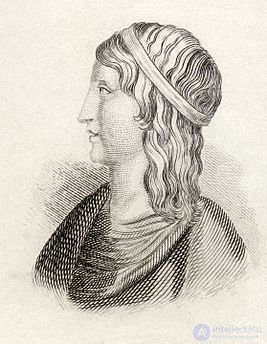
Lucius Apuleius (2nd century BC) - in the writings of "Metamarfozy", "Cupid and Psyche" touches the concept of the soul.
The myth of the love of Cupid and Psyche originated in Greece, but gained recognition and wide distribution in Rome. He was processed and introduced in his book of stories "The Golden Donkey" by Roman antiquity writer Apuleius. Therefore, all the heroes of this myth, goddesses and gods, are called by Roman names, except for the earthly Psyche - it has retained the former, Greek name, which meant "soul, breath." Apuleius reflected the folk, folklore sources of the tale of the love of two young people.
At the beginning of "Metamorphosis" the hero rides on the road on a dazzling white horse (1, 2). After turning Lucius into an ass, this horse refuses to recognize his master, and Lucius laments the cruelty of fate, by the will of which he became the "equal and comrade" of his own horse (VII, 3). In the finale of the novel, after Lucius regains his human form, his white horse immediately returns to him. This event is preceded by a prophetic dream: the hero dreams that his slave named Candide (lit. "white") has returned to him. So Apuleius allegorically speaks of the disturbed and restored harmony between the parts of the soul of Lucius. Nevertheless, the author of "Metamorphosis" transforms his "sinner" hero not into a bad horse, as one would expect, on the basis of a Platonic comparison, but into a donkey. Why?
The Platonic metaphoric description of the worst part of the soul is quite diverse: it is “a terrible beast on a chain,” and a tyrant who usurps power and a mythological monster — the theomachist Typhon. For some philosophers I - II centuries. n e., seeking to liken the philosophy of Plato to the religion of Isis, the image of Typhon, identified by them with the character of Egyptian myths Seth, the sworn enemy of Isis, had the greatest significance. Plutarch, Plato I in. n e., the successor of which Apuleius thought himself (see Metamorphoses, I, 2), in his treatise On Osiris and Isis, writes that Typhon-Set, within the soul, means all that is impermanent, violent, unreasonable; within the body - mortal, harmful, excitatory. The forces of Typhon prevent those who are moving towards the right goal. Of the pets, Typhon is dedicated to the toughest - the donkey. The transformation of Lucius into the cult animal of the antagonist of the Egyptian goddess was to symbolize the hero's first step in the mystical path, at the beginning of which he had to know the essence of the evil principle of the world, rooted in every soul, and at the end overcome it with the help of Isis.
Under the influence of the atmosphere characteristic of the Middle Ages (strengthening of church influence on all aspects of society, including science), the idea was affirmed that the soul is a divine, supernatural principle, and therefore the study of mental life must be subordinated to the tasks of theology. Only the outer side of the soul, which is addressed to the material world, can yield to human judgment. The greatest sacraments of the soul are available only in religious (mystical) experience.
From the XVII century, a new era begins in the development of psychological knowledge. It is characterized by attempts to comprehend the spiritual world of a person mainly from the general philosophical, speculative positions, without the necessary experimental base. R. Descartes ( 1596-1650) concludes that there is a complete difference that exists between the soul of a man and his body: the body is always divisible by its nature, whereas the spirit is indivisible. However, the soul is capable of producing movements in the body. This contradictory dualistic doctrine gave rise to a problem called psychophysical: how are the physical (physiological) and mental (mental) processes in a person related? Descartes laid the foundations of the deterministic (causal) concept of behavior with its central idea of reflex as a natural motor response of the organism to external physical stimulation.
The Dutch philosopher B. Spinoza (1632-1677) made an attempt to reconnect the body and soul of man, separated by the teachings of Descartes. There is no special spiritual beginning, it is always one of the manifestations of an extended substance (matter). Soul and body are determined by the same material causes. Spinoza believed that such an approach makes it possible to consider the phenomena of the psyche with the same accuracy and objectivity as the lines and surfaces are considered in geometry.
The German philosopher G. Leibniz (1646-1716), rejecting the equality of mind and consciousness established by Descartes, introduced the concept of the unconscious mind. The hidden work of psychic forces, innumerable small perceptions (perceptions), is continuously going on in the human soul. From them arise conscious desires and passions.
The term "empirical psychology" was introduced by the German philosopher of the 18th century. X. Wolf to designate directions in psychological science, the basic principle of which is to monitor specific mental phenomena, their classification and the establishment of an experimentally verifiable, regular relationship between them. The English philosopher J. Locke (1632-1704) regards the human soul as passive but capable of perceiving the environment, comparing it with a clean blackboard on which nothing is written. Under the influence of sensual impressions, when awakening, the soul of a person is filled with simple ideas, it begins to think, that is, form complex ideas. In the language of psychology, Locke introduced the concept of association - the relationship between mental phenomena, in which the actualization of one of them entails the appearance of the other.
In the 1760s, Johann Caspar Lafater laid the foundations for the theory of physiognomy and criminal anthropology - the proposition that man is an animal, moral and intellectual being - lusting, feeling and thinking. This human nature is expressed in his whole figure; therefore, physiognomy in the broad sense of the word embraces the entire morphology of the human body, in contact with chiroognomy, podoscopy, etc. But since the most expressive "soul mirror" is the human head, physiognomy can be limited to the study of the human skull and face. Intellectual life of a person is expressed in the structure and outlines of the skull and forehead: the moral and sensual life - in the structure of the facial muscles, in the outlines of the nose and cheeks; Human quality animals are symbolized by the mouth of the mouth and the lines of the chin. The central organ of the face is the eyes, with nerves and muscles surrounding them.
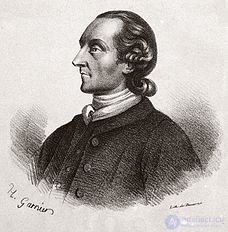
The separation of psychology into an independent science occurred in the 60s of the XIX century. It was associated with the creation of special research institutions - psychological laboratories and institutes, departments in higher educational institutions, as well as the introduction of an experiment to study mental phenomena. The first variant of experimental psychology as an independent scientific discipline was the physiological psychology of the German scientist V. Wundt (1832-1920) , the creator of the world's first psychological laboratory. In the field of consciousness, he believed, there is a special mental causality, which is subject to scientific objective research.
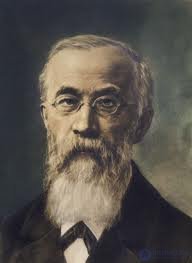
Wundt, Wilhelm
The founder of the Russian scientific psychology is IM Sechenov (1829-1905) . In his book Reflexes of the Brain (1863), the basic psychological processes receive a physiological interpretation. Their scheme is the same as that of reflexes: they originate in external influence, continue with central nervous activity and end with response activity — movement, act, and speech. With this interpretation, Sechenov attempted to wrest psychology from the circle of a person’s inner world. However, the specificity of mental reality in comparison with its physiological basis was underestimated, the role of cultural-historical factors in the formation and development of the human psyche was not taken into account.
Sigmund Freud was born on May 6, 1856, becoming, in fact, the founder of modern psychology. More precisely, deep psychotherapy. His main achievement is often called the discovery of the unconscious. Of course, the theory changed over time, refined and revised. Initially, a topographic model of personality was created, highlighting a kind of levels of consciousness: the unconscious (which is not realized in principle or is realized after overcoming resistance), conscious and preconscious (that which is not realized now, but can be realized).
Then, in the structural model, Freud identified three components: Ono, I, and Super-I. Another concept is related to the study of instincts. At first, Freud singled out the sexual instinct and the instincts of Ya. As the driving forces of the personality. Aggression was viewed as a component of sexual attraction. Later, Freud revised his views, proposing a new dichotomy of the life instinct of Eros and the death instinct of Thanatos (“On the Other Side of the Pleasure Principle”, 1920; “I and It”, 1923).
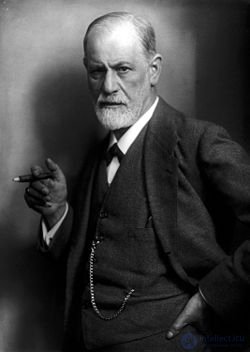
Sigmund freud
An important place in the history of Russian psychology belongs to G. I. Chelpanov (1862-1936). His main achievement is the creation of a psychological institute in Russia (1912). VM Bekhterev (1857-1927) developed an experimental direction in psychology using objective research methods . The efforts of I. P. Pavlov (1849-1936) were directed to the study of conditioned reflex connections in the activity of the organism. His work greatly influenced the understanding of the physiological basis of mental activity.
Comments
To leave a comment
History of psychology
Terms: History of psychology